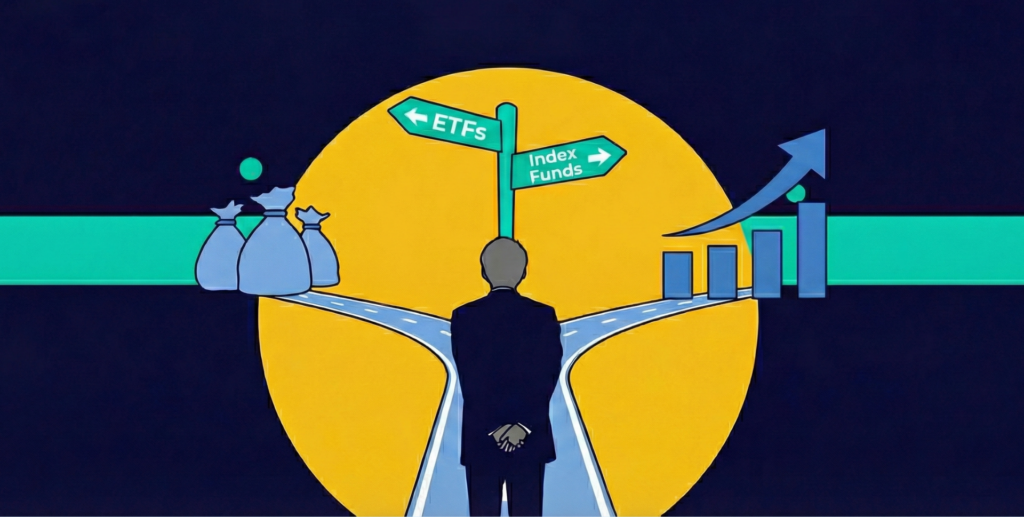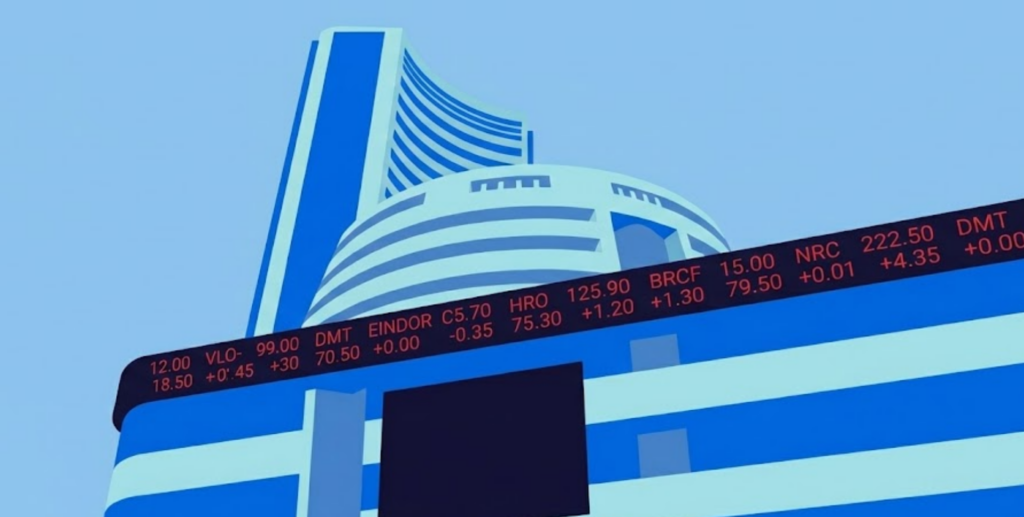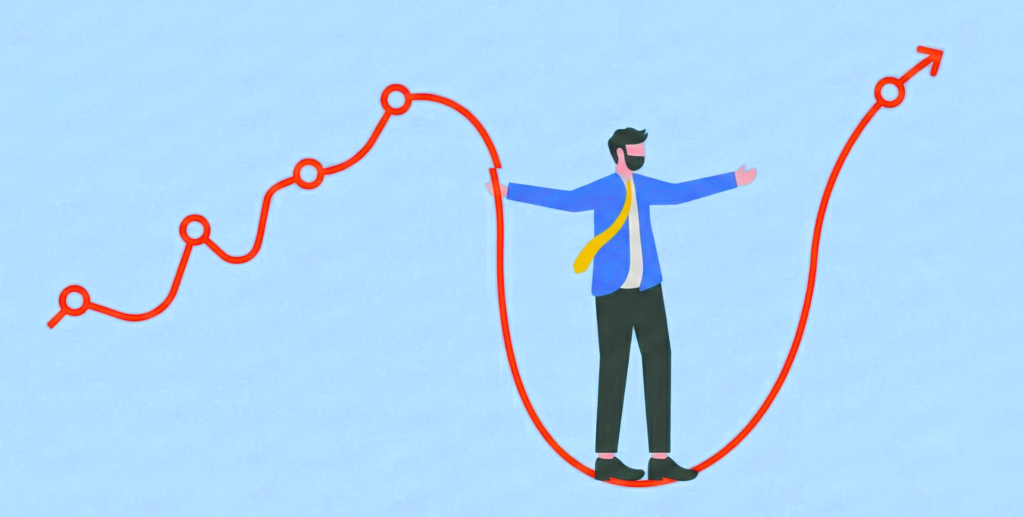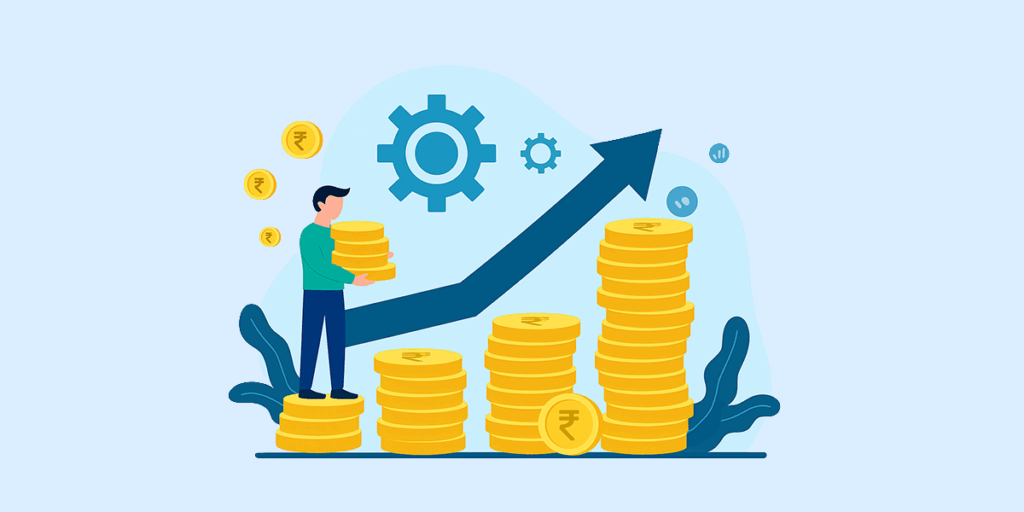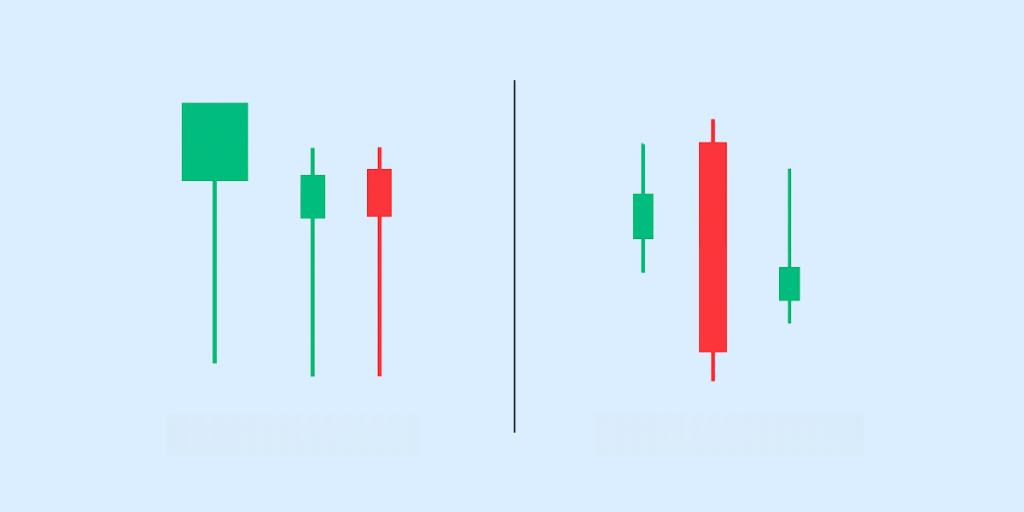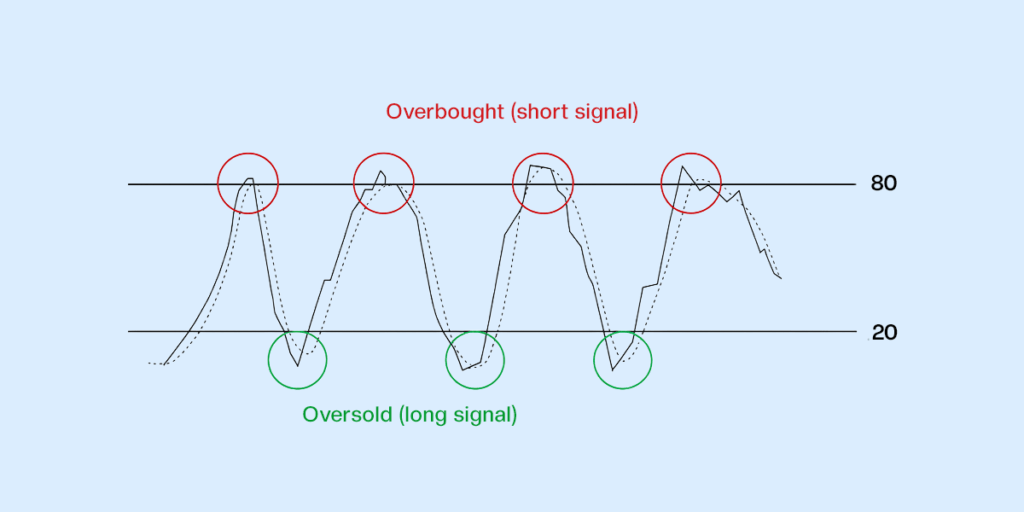Quick Summary:
Long unwinding is when investors sell off stocks they previously purchased. This occurs when market sentiment shifts or when investors want to cut losses. Long unwinding signals include increased selling volume, continuous price declines, and a slowdown in open interest within derivatives markets. Generally, it signals a bearish trend. The effects of long unwinding can vary, potentially leading to market downturns or, depending on market conditions and individual strategies, even creating new profit opportunities.
Long Unwinding Meaning
Long unwinding is a market phenomenon where investors sell stocks they previously bought with high hopes. It’s like changing your mind about a bet you placed on a horse race.
You might have thought a particular horse (or, in this case, a stock) would win big, but as the race progresses, you realise it’s not performing as expected. So, you decide to cut your losses or take whatever small gains you can get. This happens in the stock market when investors who once believed in a stock’s potential growth start selling their shares.
Example of Long Unwinding
Let’s understand the concept of long unwinding with an example. Six months ago, Sarah bought 500 shares of Tech Innovators Inc. at $50 each. She was confident in the company’s growth potential and expected the stock price to climb, representing her long position in the market.
Over time, Tech Innovators faced unexpected challenges – a critical product launch was delayed, and competition in the sector intensified. As a result, the stock price stagnated around $55, below Sarah’s target of $70.
Sensing the company’s prospects shifting, Sarah decides to sell her shares at the current price—a clear example of long unwinding.
Long Unwinding in Option Chain
Long unwinding in the option chain is a crucial indicator of shifting market sentiment– it occurs when traders close out their existing long option positions. This is typically seen through decreasing open interest in specific options. As demand for these options falls, their prices often drop as well. This process can signal that investors believe the underlying asset won’t perform as initially expected.
Long Unwinding in Call Option
Incall options, specifically long unwinding, happen when traders sell their previously purchased call options. This often occurs when they believe the underlying security is overvalued or their profit targets have been met. However, traders may also unwind to limit potential losses if they expect the stock price to decline.
What is Long Unwinding in Stocks?
Long unwinding in stocks occurs when traders close out their previously established long positions. This typically happens when investors who initially bought shares expecting price increases decide to sell. However, it’s not just about simple buying and selling.
In futures and options markets, long unwinding is more complex. Traders might need to make offsetting trades in the underlying stock or index to neutralise their position. For example, if a trader accidentally sold stocks instead of buying, they’d need to return those shares and then buy the originally intended shares to correct the error.
How Does Unwinding Work?
Unwinding is the process of closing complex trading positions that involve multiple steps or transactions. It’s like untangling a knot in your financial strategy. For instance, if you’ve bought stocks and sold put options on the same company, unwinding means reversing both these actions. You’d sell the stocks and buy back the put options.
Traders and brokers use this technique to correct mistakes, respond to changing market conditions, or lock in profits. However, it requires careful timing and execution, as each part of the unwinding process can affect market prices.
Identifying Indicators of Long Unwinding in the Stock Market
To spot long unwinding in the stock market, you need to keep an eye on several key indicators, including:
- Increased Selling Volume: A sudden spike in selling activity, especially during price declines, often indicates investors are closing their long positions. This surge in volume can accelerate price drops.
- Consistent Price Declines: Prolonged downward trends, particularly after a bullish period, may suggest investors are losing confidence and unwinding their long positions.
- Reduced Open Interest: In derivatives markets, a decrease in open interest alongside falling prices strongly indicates long unwinding. This shows that contracts are being closed rather than new short positions being opened.
- Negative News Impact: Unfavourable company or industry news can trigger long unwinding. Investors may rush to sell with disappointing earnings reports or adverse market developments.
Is Long Unwinding Bearish or Bullish?
Long unwinding generally leans bearish, but its true nature depends on the broader market context. When investors sell off their long positions en masse, it often signals a loss of confidence in future price increases. This selling pressure typically drives stock prices down, creating a bearish atmosphere.
However, the reasons behind the unwinding matter are as follows: It could be profit-taking in a strong market or a response to changing economic conditions. Sometimes, this selling can even set the stage for a future rally if prices become attractive to new buyers.
To interpret long unwinding accurately, investors must consider the overall market sentiment, trading volumes, and the specific catalysts driving the sell-off.
What Does Long Unwinding Indicate?
Long unwinding signals a shift in market sentiment. It occurs when traders who previously held optimistic views about a stock or the overall market start to exit their positions. This typically happens in futures and options markets when investors believe the upward trend has lost steam.
As these bullish traders sell off their holdings, it suggests they no longer expect significant price increases. This behaviour change can be a warning sign, indicating that the market’s upward momentum may be slowing down or reversing.
For attentive investors, long unwinding can serve as a valuable indicator of potential market direction changes, prompting them to reassess their strategies and expectations.
Is Long Unwinding Good or Bad?
For seasoned traders, long unwinding can be profitable when anticipating market downturns. They can sell high and buy back low, securing gains. It also helps investors cut losses when a stock’s prospects dim.
However, long unwinding carries risks, especially for short-sellers who may face significant losses if the market moves against them. For example, widespread unwinding can erode investor confidence and potentially trigger market crashes. During the Harshad Mehta scandal, panic selling led to massive losses for retail investors.
In extreme cases, such events can impact the broader economy. Therefore, long unwinding is neither inherently good nor bad – its effects depend on market conditions, individual strategies, and the scale of the unwinding.
What is Short Covering and Long Unwinding?
Long unwinding occurs when investors sell their existing long positions to take profits or cut losses. In contrast, short covering happens when traders buy back shares to close their short positions. Some key differences between the two concepts are:
| Aspect | Long Unwinding | Short Covering |
| Market Sentiment | Typically signals a move from bullish to neutral or bearish sentiment. | Typically signals a move from bearish to neutral or bullish sentiment. |
| Impact on Prices | Causes prices to fall due to increased selling pressure. | Causes prices to rise due to increased buying pressure. |
| Open Interest | Declines as traders close their long positions, reducing demand for the asset. | Declines as traders close their short positions, decreasing the need to borrow the asset. |
| Strategy | Commonly used for profit-taking or reducing risk exposure. | Commonly used to limit losses or manage risk in a short position. |
Long Build-Up vs Long Unwinding
Long build-up and long unwinding describe opposite market activities that significantly impact stock prices and market sentiment. Here is a tabular representation elaborating on the key differences between the two:
| Aspect | Long Build-Up | Long Unwinding |
| Definition | Long build-up occurs when investors buy more stocks, expecting prices to rise. | Long unwinding occurs when investors sell previously bought stocks, usually to book profits or cut losses. |
| Sentiment | Bullish | Bearish |
| Market Stance | Signals a shift from a negative or neutral stance to a more positive one. | Indicates a shift from a positive or neutral stance to a more negative one. |
| Price Impact | Increased buying demand puts upward pressure on prices. | Increased selling pressure leads to a decrease in prices. |
| Investor Implications | Beneficial for long-term investors looking for higher profits. | If selling pressure persists, this can lead to a bearish trend or market correction. |
What Happens After Long Unwinding?
After long unwinding, the stock market often enters a period of uncertainty. Prices may continue to fall if selling pressure persists, potentially leading to a bearish trend. This happens because the increased supply of stocks outpaces demand, driving prices down. However, prices might stabilise if selling eases or even bounce back in a bullish reversal.
Moreover, the aftermath of long unwinding can significantly impact market stability. How? When many investors sell simultaneously, it creates price swings and increased volatility. This can reshape market sentiment, shifting it from bullish to bearish or neutral. Plus, the supply-demand balance gets disrupted, potentially causing a temporary correction or trend reversal.
Long Build-Up vs Long Unwinding vs Short Covering vs Short Buildup
The long build-up, long unwinding, short covering, and short buildup describe specific market activities that impact price movements and market sentiment in distinct ways. Let’s understand this better:
| Aspect | Long Build-Up | Long Unwinding | Short Covering | Short Buildup |
| Definition | Buying more futures contracts, expecting prices to rise. | Selling existing futures contracts to book profits or cut losses. | Buying back futures contracts to close short positions. | Selling more futures contracts, expecting prices to fall. |
| Price Change | Increase | Decrease | Increase | Decrease |
| Open Interest Change | Increase | Decrease | Decrease | Increase |
| Sentiment | Bullish | Bearish | Bullish | Bearish |
Should You Go Long Unwinding in the Stock Market?
Long unwinding in the stock market can be a double-edged sword. For savvy traders who can predict market shifts, it offers a chance to profit from falling prices. By selling high and buying back low, they can lock in gains.
This strategy also appeals to those looking to cut losses when a stock’s outlook turns sour. However, it’s not without risks, especially for short-sellers who may face steep losses if the market moves against them.
Conclusion
Long unwinding involves selling previously purchased stocks when market conditions or investor sentiment shifts. It can signal changing trends, impact stock prices, and reflect broader economic factors. Also, while it often indicates bearish sentiment, context is key.
By staying informed about long unwinding and other market indicators, investors can make more informed decisions, adjust their strategies accordingly, and potentially protect their investments from unexpected downturns.
FAQs
Is long unwinding bearish or bullish?
Long unwinding is generally considered a bearish signal. It indicates that investors are closing out their long positions, expecting the asset price to decline.
What to do in long unwinding?
During long unwinding, investors typically sell their positions to lock in profits or minimise losses. New investors might wait for the price to stabilise or decline further before considering new positions.
What does the long unwinding of a stock mean?
The long unwinding of a stock means investors sell their previously purchased shares. This selling pressure often results in a decrease in the stock price.
How do you identify long unwinding?
Long unwinding can be identified by analysing trading volumes and price movements. A significant increase in selling volume and a price decline typically indicate long unwinding.
What is the effect of long unwinding?
The effect of long unwinding is generally a drop in the asset’s price due to increased selling pressure. This can also signal a potential shift in market sentiment from bullish to bearish.




